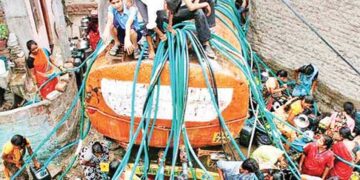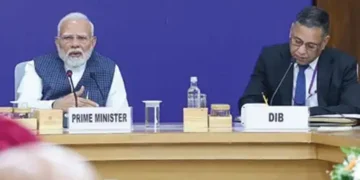Blitz Bureau
WATER supply shortage emerges as the most severe risk confronting India over the next two years 2025 to 2027,according to the recently released World Economic Forum (WEF) report.
The 20th edition of the WEF’s annual Global Risks Report identified India alongside Mexico, Morocco, Tunisia, and Uzbekistan as the five countries where water supply crises rank as the top immediate or shortterm risks.
India’s risk profile, as outlined in the Global Risks Report 2025, highlights critical challenges across technological, societal, environmental, and economic domains. Alongside water supply shortage, four other risks-misinformation and disinformation, erosion of human rights and civic freedoms, pollution and labour and talent shortages -rank among the top risks India will confront between 2025 and 2027.
The report says that water supply shortages, whether for human, industrial, or ecosystem needs, lead to water insecurity at local, regional, and global levels. These shortages are driven by factors including human overexploitation, mismanagement of critical natural resources, climate change, and insufficient infrastructure. The number of countries identifying water supply shortages as a top-five risk has surged from seven in 2024 to 27 in 2025, reflecting the growing global crisis and the increasing significance of this issue.
The WEF reportoutlines some of the most critical risks the world may face over the next decade, set against the backdrop of a warming climate, conflicts, rapid technological advancements like Artificial Intelligence, and the spread of misinformation and disinformation. It also identifies the top five risks for each country based on a global survey.
The findings, based on a global survey, underscores the urgent need for India and other affected nations to address water scarcity through sustainable management strategies and policy interventions. Apart from water shortage, pollution of air, water, and soil havealso emerged as another top immediate environmental risk for India.
































